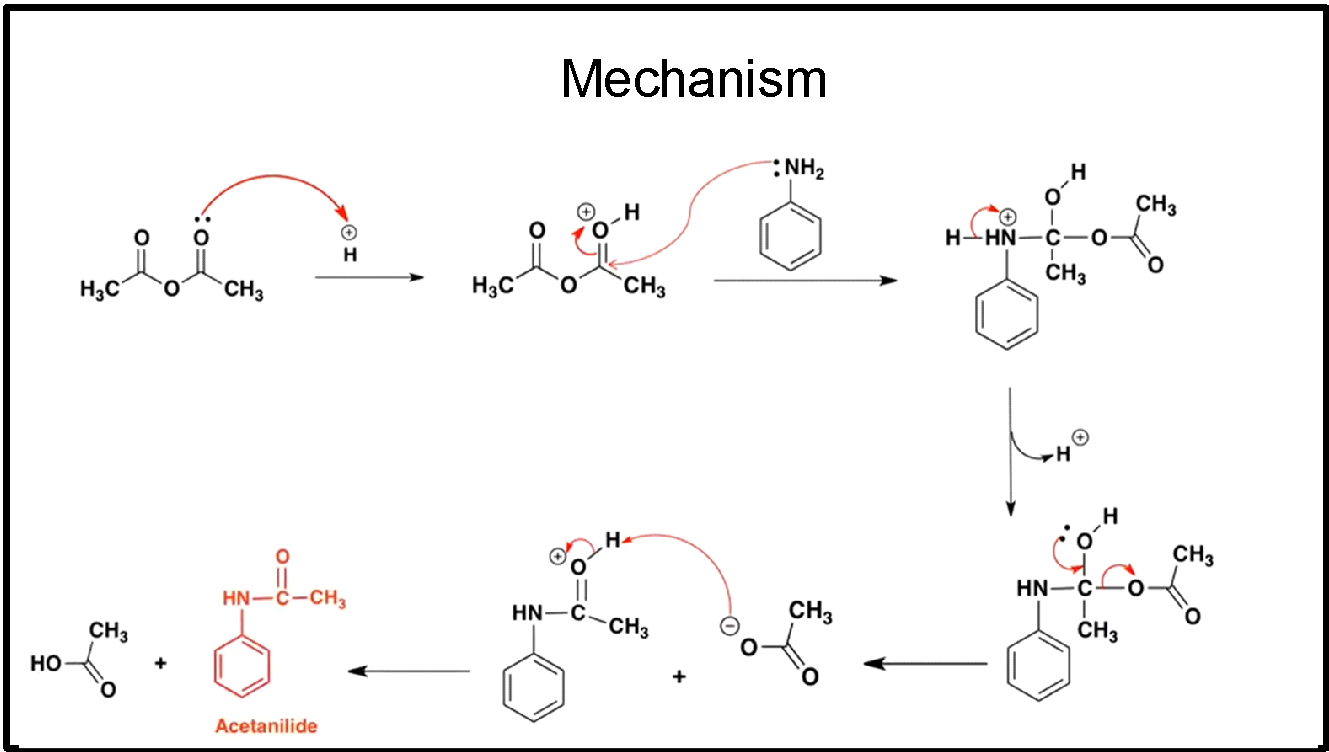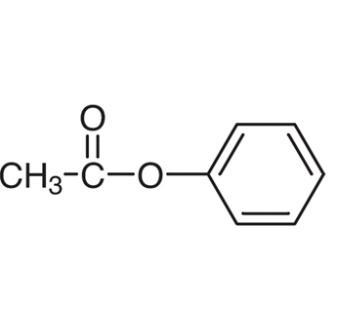
Answer
443.7k+ views
Hint: Aniline is a primary amine (i.e., one of the hydrogen of ammonia is replaced by benzene) and it can react with acetic anhydride and acetanilide by the reaction called acetylation. Acetylation is a nucleophilic substitution reaction. In nucleophilic substitution reactions, the electronegative compound replaces the existing compound.
Complete answer:
To understand the above reaction, we first need to understand what are nucleophiles, what nucleophilic reactions are and what are primary amines.
First, we will understand what nucleophiles are. The word phile means loving. Nucleophiles are the compounds that are nucleus loving. This means that these compounds themselves are electron rich. Examples of nucleophiles are: Halogens (Iodine, Bromine, Chlorine), hydroxide ion, cyanide ion etc.
Another example of nucleophile is ammonia, as it contains lone pairs and can readily give its electrons to an atom.
Now the nucleophilic substitution reaction occurs when the more electronegative element or compound replaces the less electronegative compound.

For example, in above equation if we add use hydroxide (\[O{{H}^{-}}\]) as the nucleophile, hydroxide being more electronegative than \[B{{r}^{-}}\]replaces its place.
In compounds like acetic anhydride, the delocalisation of electrons in their resonance structure makes it a good electrophile and the lone pair present in amine shares its electrons with acetic anhydride to form acetanilide. Therefore, option b is correct.

The above reaction follows following mechanism:

The acetic anhydride, due to the delocalisation of electrons, gains a proton easily and becomes a good electrophile.
It further combines with the lone pair present in amine according to the mechanism shown in above diagram.
Note:
It is important to note that in nucleophilic substitution reactions, the leaving group is less negative and the nucleophile is more electronegative. The nature of the leaving group decides the type of substitution reaction that will occur. These reactions occur in saturated compounds and not in unsaturated compounds.
Complete answer:
To understand the above reaction, we first need to understand what are nucleophiles, what nucleophilic reactions are and what are primary amines.
First, we will understand what nucleophiles are. The word phile means loving. Nucleophiles are the compounds that are nucleus loving. This means that these compounds themselves are electron rich. Examples of nucleophiles are: Halogens (Iodine, Bromine, Chlorine), hydroxide ion, cyanide ion etc.
Another example of nucleophile is ammonia, as it contains lone pairs and can readily give its electrons to an atom.
Now the nucleophilic substitution reaction occurs when the more electronegative element or compound replaces the less electronegative compound.

For example, in above equation if we add use hydroxide (\[O{{H}^{-}}\]) as the nucleophile, hydroxide being more electronegative than \[B{{r}^{-}}\]replaces its place.
In compounds like acetic anhydride, the delocalisation of electrons in their resonance structure makes it a good electrophile and the lone pair present in amine shares its electrons with acetic anhydride to form acetanilide. Therefore, option b is correct.

The above reaction follows following mechanism:

The acetic anhydride, due to the delocalisation of electrons, gains a proton easily and becomes a good electrophile.
It further combines with the lone pair present in amine according to the mechanism shown in above diagram.
Note:
It is important to note that in nucleophilic substitution reactions, the leaving group is less negative and the nucleophile is more electronegative. The nature of the leaving group decides the type of substitution reaction that will occur. These reactions occur in saturated compounds and not in unsaturated compounds.
Recently Updated Pages
The radius of curvature of a plane mirror is a positive class 10 physics CBSE

Choose the word which is closest to the opposite in class 10 english CBSE

Select the antonym for the following word from the class 10 english CBSE

Select the synonym for the given word Transparency class 10 english CBSE

Select the given word which means the opposite of the class 10 english CBSE

The purest form of carbon is a Graphite b Diamond c class 10 chemistry CBSE

Trending doubts
How do you graph the function fx 4x class 9 maths CBSE

Which are the Top 10 Largest Countries of the World?

Fill the blanks with the suitable prepositions 1 The class 9 english CBSE

What is the meaning of sol in chemistry class 11 chemistry CBSE

The Equation xxx + 2 is Satisfied when x is Equal to Class 10 Maths

The capital of British India was transferred from Calcutta class 10 social science CBSE

Why is there a time difference of about 5 hours between class 10 social science CBSE

Capital of the Cheras was A Madurai B Muziri C Uraiyur class 10 social science CBSE

What organs are located on the left side of your body class 11 biology CBSE







